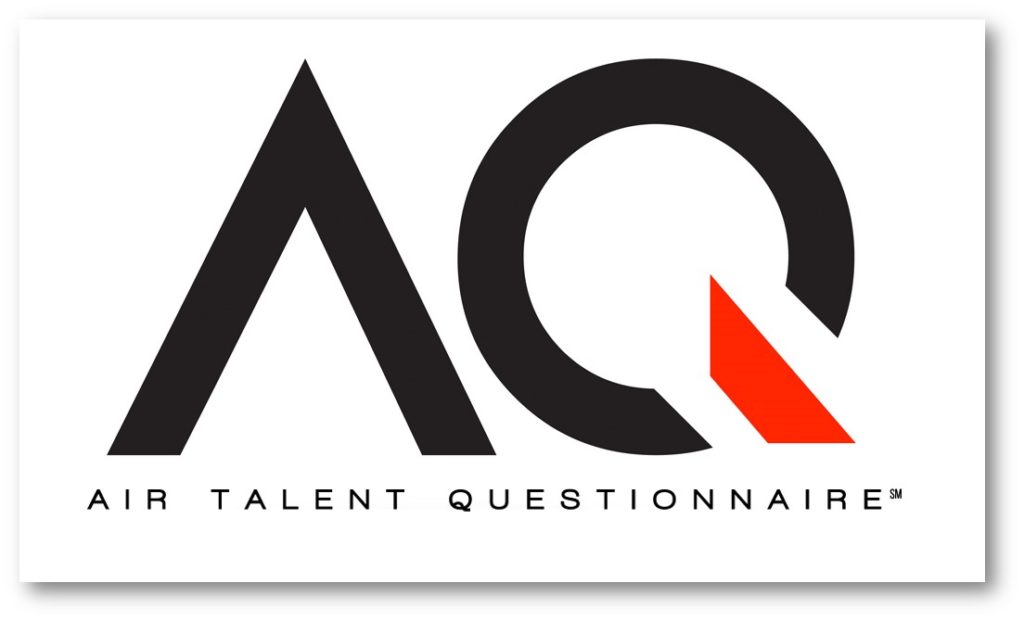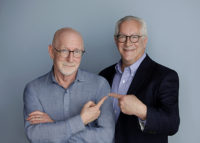
I’m blessed that my staff does a great job of feeding me great blog post ideas. As many of you know, we publish a new post every weekday – and have done so for 13+ years.
In today’s post, it’s a familiar topic – storytelling. It’s almost become cliche because it seems like virtually every consumer brand is now creating narratives – banks, dishwashing liquids, and grocery stores. They’re all diving in head first into the storytelling pool – often with very mixed results.
That’s because telling a compelling story that moves an audience isn’t easy. It requires great writing and even better production. As we’re learning with each passing year on the podcasting platform, quality matters. But it also requires a truly great tale, often one that is personal, that captivates the listener or the viewer. When they’re contrived, people see right through them.
There was a time – not that long ago – when many podcasters insisted that a raw, “unproduced” approach was actually preferred by fans, rather than a slick, produced sound.
There are no absolutes when it comes to taste and aesthetics, but it seems more and more apparent that if a consumer is going to spend any length of time checking out your podcast, it had better be well-produced.
That’s been part of the public radio formula, and probably a big reason why so many of their podcasts are so popular. They are almost always well written and well produced. If you look at the top ranking podcasts, you are more and more likely to discover content that checks off both these important boxes.
At this year’s Podcast Movement conference next month in Philly, I’m expecting this topic will be a frequent part of conversations – on our “Broadcasters Meet Podcasters” stage – as well as in the hallways and bars in and around the convention hotel. But the real secret to making a great podcast isn’t about which mic you use, how many people participate, and how long it is.
It’s about the quality and the texture of the story itself.
This week, Bill Jacobs sent me an amazing video that perhaps you’ve already seen on Facebook, Twitter, or a news site. A first-time aspirant for public office in Texas – Mary Jennings Hegar – better known as MJ. She’s running for Congress in Texas’ 31st district against incumbent John Carter. The video is just over three minutes – much too long for a TV spot, but perfect for Internet video.
In just five days since its online release, it’s racked up nearly 2 million views. That’s pretty impressive for just another of the mundane, predictable 435 Congressional races happening all over the country in just a few short months.
Hegar narrates the entire video, and as you’ll no doubt notice, it is impeccably well-produced. In fact, more so than any political campaign ad I’ve ever seen – for offices much higher than a Congressional seat – this video is light years ahead of the pack.
And while the directing and editing is top-shelf, it is Hegar’s story that grabs you. It’s easy to watch, share, and talk about with others. That’s because it tells a great story and it does so with a theme – in this case “doors.”
Put your politics aside and watch how well Hegar’s video connects with viewers, especially if you’ve never heard of her:
And after watching it, another of our consultants – Mike Stern, who works closely with many people on the air – made this observation:
“I learned more about this woman in three minutes than I know about most air talent who I listen to regularly.”
And as I pondered that thought, I couldn’t help but think that both Bill and Mike are spot on. It’s a great video, and it does a better job of telling a complete stranger’s story than most stations do with their veteran, trusted on-air talent.
When you think about it, how many great personalities on the radio do you really get a sense for? Think about your staff and even those you’ve worked with in prior gigs. How well do you really know them – their stories, and what makes them unique and interesting?
Ironically, the same is true in public radio. They may be superior storytellers on shows like “The Moth” or “This American Life,” but when it comes to showcasing their own talent, their journalists, and their hosts, most are no better off than their commercial radio counterparts. After all, how well do you really know Ira Glass, Steve Inskeep, or Terry Gross?
Why is that?
You can make the case that Hegar’s video production is in a league of its own. And you’ll get no argument from me on that. You might also claim she truly has a one-of-a-kind story, from her heroics in the service to her championing of women’s rights in the hall of Congress. And, of course, that’s a great point, too.
Great storytelling is about how you move your voters – your listeners (especially those walking around with meters or diaries), as well as advertisers, looking for a reason to invest in your station rather than buying more mundane Facebook ads.
How do I know this? Over the years, I’ve met hundreds – and perhaps thousands – of on-air talent. As anyone who works in radio knows, they’re all different – all with unique goals, paths, and dreams. And they’re almost always strange, circuitous, and riveting. I was thinking about some of National Radio Hall of Fame inductees – Jonathan Brandmeier, Dr. Laura, Jim Kerr, Joan Hamburg, Mike Francesa – and the fact is, despite having listened to them for years and even seeing their audience research data, I know nothing about them – and their stories about how they came to become radio icons.
Every on-air personality I’ve ever met who has displayed even a modicum of talent, staying power, and the ability to entertain and inform has a great narrative, too. You just have to pull it out of them.
In fact, that’s often how I start up a conversation with a DJ, host, or team that I meet. It’s a simple question, but it works every time:
“So, how did you get into radio?”
Corollary questions include “Why did you get into radio?” or even “How did you end up in radio?”
But they all work, because everyone on the radio has a story. They’re all different. And every jock loves to tell their tale, embellish it a bit, and make it sound good. In this way, I not only break the ice – I learn about who’s sitting across from me and what motivates them to do what they do.
Video makes it that much more compelling to tell those radio personality stories. I know – we’ve all been taught to paint pictures with words, “theater of the mind,” and all that stuff.
And rare artists like the late Nick Michaels had that rare ability to do just that with audio. But why limit yourself to just sound when you can add pictures?
With video, we have a different pathway to get that story across. And the good news is that simple equipment – a smartphone and video editing software – can produce quality stuff. Our Techsurveys show clearly that on-demand video is way ahead of podcasts in overall consumption. We love watching short videos that teach us something, entertain us, or do a little of both.
We just wrapped up the field work for our study of air talent in partnership with Don Anthony and Morning Show Boot Camp – AQ. With over  1,200 competed interviews (thank you very much, BTW), the stories are jumping out of the data. I’m seeing things that confirm long-held beliefs, as well as being surprised by some of the thoughts, attitudes, goals, and even struggles experienced by the hundreds and hundreds of personalities who took the time to compete our survey.
1,200 competed interviews (thank you very much, BTW), the stories are jumping out of the data. I’m seeing things that confirm long-held beliefs, as well as being surprised by some of the thoughts, attitudes, goals, and even struggles experienced by the hundreds and hundreds of personalities who took the time to compete our survey.
But as riveting as the charts and graphs will be when we present the data at Boot Camp’s 30th anniversary in Chicago in August, they will pale in comparison to the real stories behind so many of these personalities, whether they work in Omaha, Orlando, or Owosso. That’s because stories trump data every day.
Radio’s ability to stay ahead and apart of Internet predators may very likely hinge on its personalities – and their ability to foster loyalty and a sense of connectedness. For many, it starts with breeding more familiarity, empathy, and relatability.
So, what’s your story?
For a look at a radio station that’s done a great job of telling its key personality’s story, check out the video of Pat Martin, the long-time midday icon at KRXQ/Sacramento (Entercom):
- Traveling At The Speed of CES - January 10, 2025
- The One Thing Missing At CES? - January 9, 2025
- AI Your Commercials - January 8, 2025




Easy answer – for the love of music; whether it’s spinning a tune or performing it live. I’ve wanted to be on the mic since I was preteen. Once I got there at 19, after enduring the internship duties of telemarketing and jumping into the mascot suit, I realized there was no money in it at that level and went along my merry way. Nevertheless, it was corporate America’s lack of loyalty that sent me back after a 15 year stint in logistics. At 34, I started back at the bottom, with less concern over what I did, which was liberating. My only goal was to put out a musical radio product that would affect people, which we’re doing every day.
That driving urge to entertain, Bob, is something you have in common with a LOT of radio people. Thanks for sharing.
Great video/story. Radio is ultimate local connection. Just tell it, play it and connect it, everywhere. Thank you, Fred.
Many thanks to you, Clark.
The sheer power of video — MJ Rocks!
Pretty amazing 3 1/2 minutes, eh?
After my 6th-grade class wrote and performed a one-hour radio program, I actually studied radio drama in the 8th -12th grades in Birmingham Michigan. My teachers were two women who had been fired from NBC, along with most of the other women and replaced by returning veterans after WW2. In addition to performing, sound effects, editing, and mixing, they brought in people from advertising agencies to teach us about how the industry works. I graduated in 1964.
Fascinating, Bob. Thanks for the story.
My trip into radio started in local UHF television in the late 1960s, to pre-satellite cable TV programming, to FM.
I’ll happily tell the story if we ever meet in person, Fred.
Would love to hear it, KM.